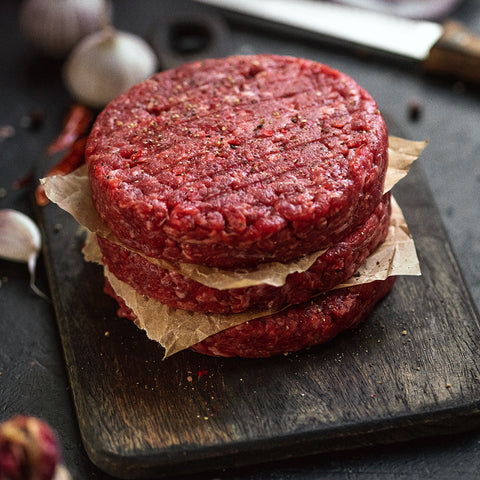As the awareness of our food supply’s impact on climate change and the environment grows, consumers have begun to seek out more sustainable food options like regeneratively raised grass-fed and finished beef. But what exactly does regenerative mean? And why should we be concerned about sustainability in our food systems? The answers may surprise you...
Why Is Regenerative Beef Better For You?
Regenerative agriculture is a way of producing food and managing land that goes beyond sustainable. Sustainable means something stays constant - not getting better but not getting worse. Regenerative agriculture is designed to enhance our land rather than degrade it. It is the science of building back the topsoil so that it is healthier and richer over time. This type of beef provides protein from cows raised on pasture's with healthier soils and ultimately producing meat that is richer in nutrients and omega-3 fatty acids (the good fats). As an added bonus, regenerative beef tends to have lower levels of saturated fat than conventionally raised meat does. It also has less potential for contamination with hormones or antibiotics.
Regenerative Raised Meat is Better for You and the Environment.
Amazingly, a potential solution to climate change could lie beneath our feet. The recent buzz around regenerative agriculture isn't just seen as a means to reduce climate change, but it is also a way to ward off droughts, bolster farmer incomes, and guarantee food security into the future.
With concern for climate change rampant, many health care institutions are seeking to lower their greenhouse gas emissions, but it is necessary to also sequester the carbon that is already in the atmosphere to protect farming. The soil is a likely way to accomplish this, but we need more to protect our communities for future generations.
Many are familiar with the idea of planting trees and preserving forests for their role in 'breathing' carbon dioxide. The theory of regenerative agriculture works on the same principle: Ensuring that our vast agricultural lands work to inhale carbon and store it in soils where it belongs. Current food production is causing significant effects on global climate, to some degree because of bad agricultural practices that inhibit the soil's ability to store carbon. Regenerative agricultural practices are reversing these effects and turning agricultural lands into a carbon sink.
Grass-Fed vs Grass-Finished vs Regenerative Beef
Grass-fed beef has a variety of health benefits and is often touted as a sustainable choice for meat-eaters. However, some types of grass-fed beef are raised in very unnatural conditions, which is why it’s important to buy from reputable sources. Technically, you could confine a cow to a cage, feed it hay and call it grass-fed. Simply grass-fed is not what you are after in a lot of cases.
Grass-finished beef refers to beef that has been grass-fed since birth; these cows spend their entire lives outside on pastureland and eat only natural grasses until they are processed.
Regenerative raised beef is grass-finished but in addition they are managed in a way that heals the land and rebuilds topsoils. This is usually done through rotational grazing. A method of moving the animals frequently so the land has time to heal, replenish and come back stronger. Regenerative raised meat is the best nutritional and environmental option today.
How To Buy Regenerative Grass-fed Beef
Look for labels (like the Land to Market Seal) indicating that an animal was raised regeneratively. Avoid those animals which have been factory farmed or confined to feedlots. Those methods of raising meat are both damaging to the long-term health of our planet and our people. It's time to step back, slow down and build a new food system the right way. All of REP Provisions, Beef & Pork was raised regeneratively and is verified regenerative by the Savory Institute.

Regenerative's for the Socially Conscious Consumer
If you’re eating regenerative meat and helping support regenerative agriculture, you’re making a socially conscious choice to improve your health, preserve our environment, and make healthier food choices for you and your family. If those environmental and social benefits aren’t enough to sell you on regenerative beef, then maybe its taste will be! Grass-finished beef tends to have a fuller more beefy flavor.




Comments (0)
There are no comments for this article. Be the first one to leave a message!